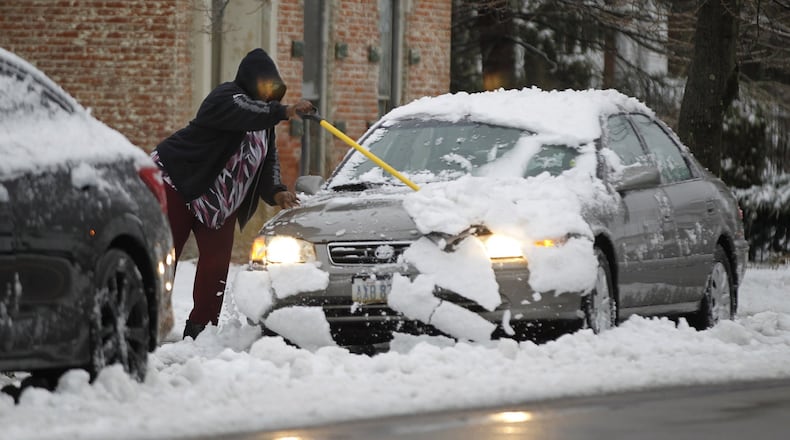Most of our curiosity comes from how we can be better prepared, and whether or not we will see a bad winter or a mild one. Some will even make their own predictions, or just advise you to look at the woolly worm.
The woolly worm is a folklore that has been around for many years, and we are going to compare it to how meteorologists make predictions today. The most common version of the folklore, also known as the woolly bear, states that you can predict the severity of the winter season by simply looking at the body of the woolly worm.
If you didn’t know, the woolly worm has 13 distinct segments — or bands — that make up the body, and three sets of legs. It is said that the 13 bands of the woolly worm represent the 13 weeks of winter. The color of the bands determine how harsh or mild the winter will be.
If the color of the middle band is black, this means the area will see plenty of snowfall, cold temperatures and a harsh winter. If the color of the middle band is brown, the area will see very little snowfall, warmer temperatures, and an overall mild winter.
RELATED: Latest Live Doppler 7 Radar
As with many folklore, there are other versions of the woolly worm. The direction the woolly worm crawls and the thickness of their coat can also indicate the severity of winter.
If the woolly worm travels in the southerly direction, this can be interpreted as the woolly worm trying to escape the cold. The northerly path of travel indicates the opposite, crawling towards a warmer winter. Lastly, if the woolly worm has a thick coat, it will be a cold winter.
Now that we know more behind the folklore, one might ask if it is accurate. Most swear by the woolly worm folklore, but scientists tend to disagree. All of the characteristics that make up the folklore has a reasonable explanation behind them.
As meteorologists and scientists, it is our job to explain why weather phenomena occurs and how it will impact you. To prepare forecasts, we study the atmosphere by using maps, charts and computer models to determine what conditions will be like in the Miami Valley. Taking it a step further, we also study climate patterns to give us an idea of the winter outlook. One climate pattern in particular is the Arctic Oscillation.
This year, the Arctic Oscillation will have a bigger influence on our day-to-day winter forecasts. The Arctic Oscillation is a climate pattern characterized by winds circulating counterclockwise around the Arctic. At times during the winter, these winds will weaken and strengthen.
During periods of weaker winds, colder air has an easier chance of spilling south. When there are negative periods of the Arctic Oscillation, temperatures will change quickly. Within a few days, temperatures can change from being extremely cold to mild.
These dramatic shifts in temperatures also could lead to more mixed precipitation storms filled with rain, freezing rain, sleet and snow.
Now that you know more about the science behind our winter forecasts, it’s still fun to think of winter folklore, like the woolly worm. It has even grown in popularity throughout the years. There are now festivals that center around the caterpillar.
About the Author
